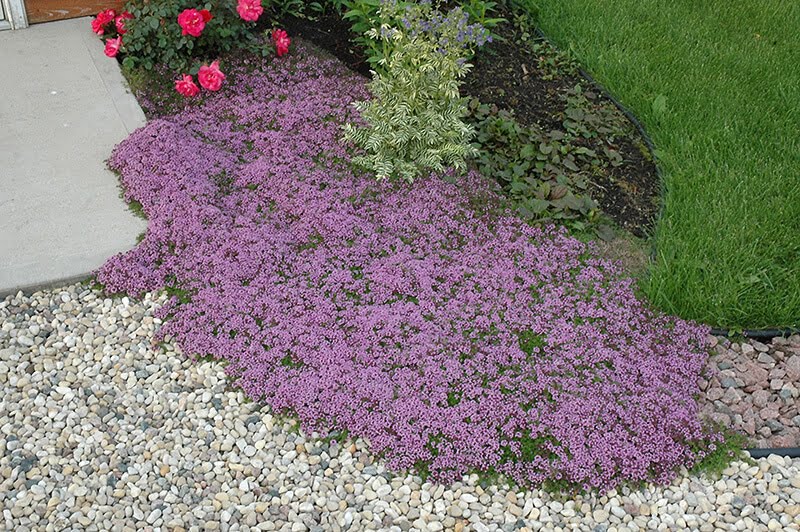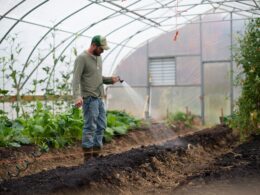Are you wondering how long your potted tulips will last? Well, you’re in luck! In this article, we will explore the lifespan of potted tulips and provide you with tips on how to ensure their longevity.
By following these guidelines, you can enjoy the beauty of your tulips for as long as possible. We will discuss how to choose healthy potted tulips and provide them with optimal growing conditions. Additionally, we will address common issues that may arise and offer solutions to keep your tulips thriving. Deadheading and pruning techniques will also be covered to promote extended blooming.
Furthermore, we will guide you on transitioning your potted tulips outdoors and ways to recycle or replant them after they have finished blooming. With these helpful tips, you can enjoy your potted tulips for an extended period and create a stunning display in your home or garden.
Quick Summary
- Lifespan of potted tulips can be extended with proper care and maintenance.
- Providing optimal growing conditions, such as proper lighting, watering, and temperature, is important for the longevity of potted tulips.
- Regular deadheading and pruning, using clean and sharp tools, can extend the lifespan of potted tulips.
- Consider recycling or replanting potted tulips to reduce waste and promote sustainability in gardening practices.
Lifespan of Potted Tulips
Potted tulips, just like a burst of springtime in your home, can brighten up any space and bring joy for several weeks! If you want to extend the lifespan of your potted tulips, here are some care tips to keep in mind.
Firstly, make sure to place your potted tulips in a well-lit area with indirect sunlight. They thrive in cooler temperatures, so avoid placing them near radiators or heating vents. Keep the soil moist but not soggy, as overwatering can lead to root rot. It’s best to water them when the top inch of soil feels dry to the touch.
To keep your potted tulips as indoor decorations, avoid exposing them to extreme temperature changes. They prefer a consistent temperature between 60-68 degrees Fahrenheit. If you want to enjoy your potted tulips for longer, you can deadhead the flowers as they fade. This involves removing the wilted flowers to encourage more blooms.
Remember to keep your potted tulips away from pets or small children, as they can be toxic if ingested. If you have curious pets or children, it’s best to place the tulips in a location that is out of their reach.
By following these care tips, you can ensure that your potted tulips last as long as possible, bringing beauty and joy to your home.
Choosing Healthy Potted Tulips
When selecting healthy tulips for your home, it’s important to choose ones that will thrive and bring joy for weeks to come. To ensure you’re getting the best bulbs, start by checking their appearance. Look for bulbs that are firm and plump, without any signs of mold or rot. Avoid bulbs that have soft or mushy spots, as this could be a sign of disease.
Additionally, choose bulbs that have green foliage and well-developed roots. These are indicators of a healthy plant that will have a better chance of surviving and thriving in your home.
Preventing diseases is another important aspect of choosing healthy potted tulips. Look for bulbs that are free from any signs of disease, such as spots or discoloration on the foliage or petals. It’s also a good idea to inspect the bulbs for any signs of pests, such as aphids or spider mites. These pests can wreak havoc on your tulips and hinder their growth.
To further prevent diseases, make sure to provide proper care for your potted tulips. This includes placing them in a location with good air circulation, avoiding overwatering, and regularly removing any dead or dying foliage.
By choosing healthy bulbs and taking preventive measures, you can ensure that your potted tulips will last for weeks, bringing beauty and joy to your home.
Providing Optimal Growing Conditions
To provide optimal growing conditions for your potted tulips, you need to consider three key points.
First, make sure they receive proper lighting by placing them in a bright location with indirect sunlight.
Second, ensure adequate watering by keeping the soil moist but not waterlogged.
Lastly, maintain an appropriate temperature by keeping the tulips in a cool environment, ideally around 60 to 65 degrees Fahrenheit.
Proper Lighting
Having the right amount of light is key for tulips to thrive in a pot. When it comes to proper lighting for indoor gardening, there are a few things you need to keep in mind to ensure the safety and well-being of your potted tulips.
Firstly, place your tulip pot in a location where it can receive bright, indirect light. Avoid placing it in direct sunlight as this can cause the leaves and flowers to wilt or burn.
Secondly, make sure to rotate the pot every few days to ensure even light distribution, as tulips tend to lean towards the light source.
Lastly, if you notice that your tulip leaves are growing tall and spindly, it’s a sign that they’re not receiving enough light, and you should consider moving the pot to a brighter location.
Following these lighting guidelines will help your potted tulips flourish and extend their lifespan.
Adequate Watering
Make sure you water your potted tulips adequately to keep them hydrated and thriving. Adequate watering is crucial for the health of your tulips, but it’s important to strike a balance and prevent overwatering. Too much water can lead to root rot and other issues that can harm your tulips. To help you maintain the right amount of water, use the table below as a guide:
| Watering Frequency | Signs of Overwatering | Signs of Underwatering |
|---|---|---|
| Once a week | Yellowing leaves and wilting stems | Dry soil and drooping leaves |
| Every 10 days | Moldy or foul-smelling soil | Stunted growth and pale leaves |
| Every 2 weeks | Mushy or waterlogged roots | Wilting and browning petals |
By following these watering guidelines, you can ensure that your potted tulips receive the right amount of water to thrive and avoid any problems associated with overwatering.
Appropriate Temperature
Maintain the appropriate temperature for your potted tulips to ensure their optimal growth and health. It’s crucial to provide them with the right conditions throughout their lifespan.
Tulips thrive in cool temperatures, so it’s essential to keep them in a location that isn’t too hot or too cold. During the winter, when temperatures drop significantly, it’s important to protect your potted tulips from freezing. Place them in a sheltered area, like a garage or basement, where the temperature remains above freezing.
If you keep your tulips indoors, make sure to place them near a window where they can receive ample sunlight, but avoid placing them near drafts or heat sources.
By maintaining the appropriate temperature, you can ensure your potted tulips will last longer and continue to bloom beautifully.
Recognizing and Addressing Common Issues
One common issue when caring for potted tulips is that they may not last as long as expected. It can be frustrating when you put effort into growing beautiful tulips, only to have them wilt and die prematurely. However, by recognizing and addressing common issues, you can troubleshoot potted tulip problems and ensure that your flowers thrive.
One of the most common issues with potted tulips is overwatering. While tulips need regular watering, excessive moisture can lead to root rot and the death of the plant. To avoid this, make sure to check the soil moisture regularly and only water when the top inch of soil feels dry. Additionally, ensure proper drainage by using well-draining soil and pots with drainage holes.
Another issue to watch out for is inadequate sunlight. Tulips require at least six hours of direct sunlight each day to bloom and thrive. If your potted tulips are not getting enough sunlight, consider moving them to a sunnier location or using artificial grow lights to supplement light.
Lastly, be mindful of pests and diseases that can affect potted tulips. Common pests include aphids, slugs, and snails, which can damage the leaves and flowers. To address these issues, regularly inspect your plants for signs of pests and treat them with appropriate insecticides or organic pest control methods.
By recognizing and addressing these common issues, you can troubleshoot potted tulip problems and ensure that your plants last longer. Remember to provide proper watering, adequate sunlight, and protect your plants from pests and diseases. With a little care and attention, you can enjoy beautiful and long-lasting potted tulips.
Deadheading and Pruning
To keep your potted tulips looking their best, don’t forget to regularly deadhead and prune them. Deadheading is the process of removing the faded or spent flowers from the plant. It not only keeps your tulips looking neat and tidy, but it also encourages the growth of new blooms.
To deadhead your tulips, simply pinch off the faded flower heads at the base of the stem. Be sure to wear gloves to protect your hands from any thorns or prickles.
Pruning, on the other hand, involves cutting back any damaged or diseased parts of the plant. This not only improves the overall appearance of your tulips but also helps to prevent the spread of diseases. When pruning, use clean and sharp pruning shears to make clean cuts. Remember to disinfect your tools before and after each use to avoid spreading any diseases.
Regular deadheading and pruning will help extend the lifespan of your potted tulips and ensure that they continue to thrive and look beautiful throughout the season.
Extending the Blooming Period
If you want your potted tulips to keep blooming for a longer time, try providing them with enough sunlight and water. Tulips are a beautiful addition to any space, and with a little care, you can extend their blooming period and maximize their flower longevity. By following these simple tips, you can enjoy your tulips’ vibrant colors and delicate petals for an extended period.
First and foremost, make sure your potted tulips receive adequate sunlight. Place them in a location where they can receive at least six hours of direct sunlight each day. This will help them produce energy through photosynthesis and promote healthy growth. Additionally, ensure that your tulips receive enough water. Check the soil regularly and water them when the top inch feels dry. Be careful not to overwater, as this can lead to root rot.
To further extend the blooming period of your potted tulips, consider deadheading the flowers. Deadheading involves removing the faded blooms to encourage the plant to produce more flowers. This can be done by simply pinching off the wilted flowers at the base of the stem. Deadheading not only improves the appearance of the plant but also redirects the plant’s energy towards producing new blooms.
Incorporating a 2-column, 5-row table can help you keep track of these care tips and ensure that you are providing the best conditions for your potted tulips. Here’s an example:
| Sunlight | Watering |
|---|---|
| Provide at least 6 hours of direct sunlight each day | Water when the top inch of soil feels dry |
| Be careful not to overwater to avoid root rot |
By following these tips and providing your potted tulips with the right conditions, you can extend their blooming period and enjoy their beauty for as long as possible. Remember to always prioritize safety when caring for your plants.
Transitioning Potted Tulips to the Outdoors
When you’re ready to move your vibrant potted tulips outdoors, get ready to witness a stunning transformation in your garden. Transitioning potted tulips to the outdoors requires a few important steps to ensure their successful adaptation. Follow these tips for outdoor care:
-
Choose the right time: Wait until the danger of frost has passed and the soil has warmed up before moving your potted tulips outside. This will protect them from potential damage and allow them to thrive.
-
Gradual exposure: Start by placing your tulips in a sheltered spot outside for a few hours each day. This’ll help them acclimate to the outdoor conditions gradually. Over the course of a week, gradually increase the time they spend outside.
-
Select the right location: Find a sunny spot in your garden where your tulips’ll receive at least six hours of direct sunlight each day. Ensure the soil is well-draining to prevent waterlogging, which can lead to root rot.
Remember to water your tulips regularly, keeping the soil moist but not overly saturated. Mulching around the base of the plants can help retain moisture and suppress weed growth. With proper transitioning and outdoor care, your potted tulips’ll continue to bring beauty to your garden for an extended period. Enjoy the colorful display and the joy it brings to your outdoor space.
Recycling or Replanting Potted Tulips
Consider recycling or replanting your vibrant potted tulips to extend their beauty and contribute to a more sustainable gardening practice.
When it comes to recycling tulip bulbs, there are a few options available to you. One option is to carefully dig up the tulip bulbs from the pot and store them in a cool, dry place until the following fall. In the fall, you can then plant the bulbs in your garden, allowing them to bloom naturally in the spring. This not only saves you money on buying new tulip bulbs every year but also reduces waste.
Another option is to repurpose your potted tulips by transplanting them into your garden. To do this, simply choose a sunny spot in your garden with well-draining soil. Gently remove the tulips from their pots, being careful not to damage the roots, and plant them at the same depth they were in the pot. Water them thoroughly after planting and continue to water as needed throughout the growing season.
By recycling tulip bulbs or repurposing potted tulips, you can enjoy their beauty year after year while also doing your part to reduce waste and promote sustainability in your gardening practices.
Frequently Asked Questions
How often should potted tulips be watered?
Potted tulips should be watered thoroughly once a week, allowing the soil to dry out between waterings. Avoid overwatering, as it can cause root rot. Regularly check the moisture level by sticking your finger into the soil.
Can potted tulips be grown indoors year-round?
Yes, potted tulips can be grown indoors year-round. To ensure their well-being, provide them with proper indoor tulip care, including the best soil for potted tulips. This will help keep them healthy and thriving.
How do I prevent my potted tulips from drooping?
To prevent your potted tulips from drooping, use stake support and water them properly. Ensure temperature control and provide adequate sunlight exposure to promote their longevity. Keep them safe and healthy.
Can potted tulips be planted in the garden after blooming?
Yes, you can plant potted tulips in the garden after they bloom. It’s a great idea because planting potted tulips enhances their chances of re-blooming next year, providing you with beautiful flowers for years to come.
Are potted tulips suitable for gifting or should they be kept for personal enjoyment only?
Potted tulips make a lovely gift, but they can also be enjoyed personally. They bring beauty and joy for a few weeks, and with proper care, you can extend their lifespan.
Conclusion
In conclusion, taking care of potted tulips can ensure they last as long as possible. By choosing healthy plants and providing optimal growing conditions, you can help extend their blooming period. Additionally, addressing any issues that arise, such as deadheading and pruning, can encourage continuous flowering. When the time comes, transitioning them outdoors or recycling them can be a great way to continue enjoying their beauty. With proper care, your potted tulips can bring joy and color to your space for an extended period of time.








